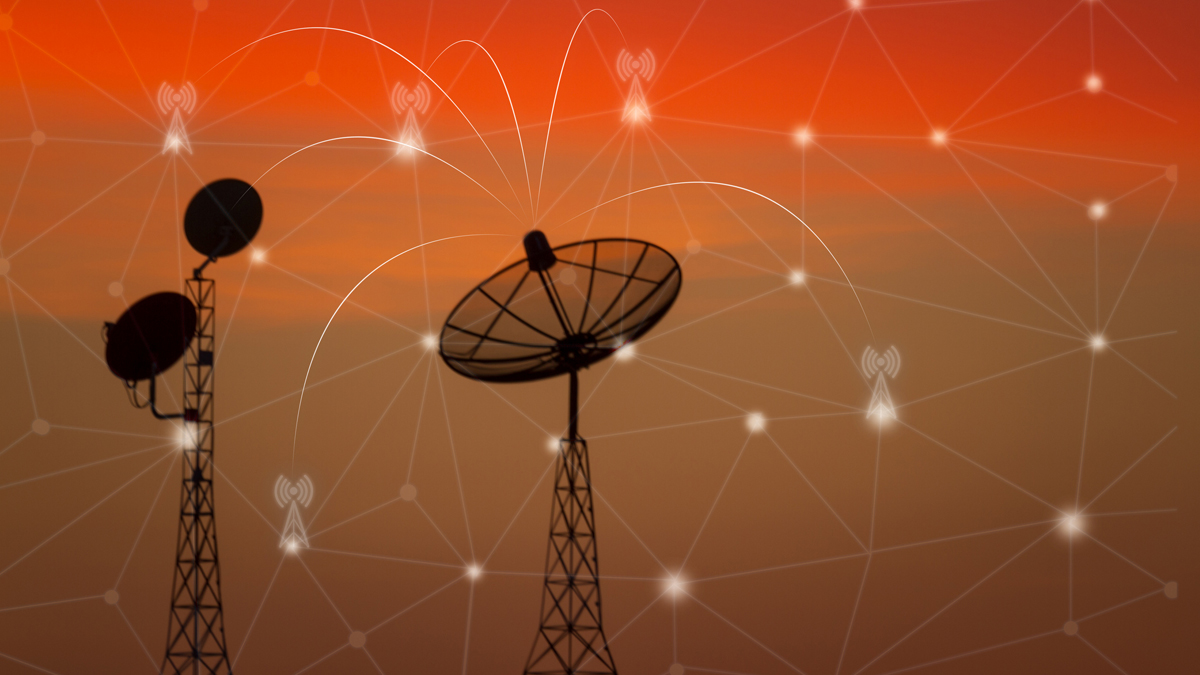Breaking Down the Argument for RF over Fiber
6/17/2025 

As you may have guessed, I’m pretty bullish about the role that RF over IP (RFoIP) will play in the digitalization of the space industry. RFoIP, along with an interoperable standard such as DIFI, enables flexibility, performance and dynamic operations that aren’t possible with the legacy options of analog signal transport over coax and RF over Fiber (RFoF). While those options have value for specific use cases, they are both limited by the need for dedicated coax/dark fiber connectivity and suffer performance degradation over long distances.
I’m confident enough in my belief that DIFI is the path forward for the satellite industry that I’m willing to play devil’s advocate and address some concerns raised about RFoIP. In no particular order, here are the most recent concerns I have seen, followed by my comments.
Concern 1: Many regions lack the IP network capacity to transport wideband signals and gateway traffic using RFoIP
This is probably the biggest knock on RFoIP, and rightfully so. RFoIP does require a significant amount of IP bandwidth—a single MHz of RF bandwidth can require up to 20Mbps of IP bandwidth. However, the largest satcom signals in commercial use today are 500Mhz in bandwidth and they can be comfortably transported on a standard 10Gbps IP network. For larger signals that are planned for the near future and for gateway applications, 40Gbps and 100Gbps IP networks and networking equipment are widely available today in all parts of the world at reasonable costs. Even the 5Ghz of spectrum that is available from full-use Q/V band will fit within a 100Gbps IP network. I saw one company argue that you should not use RFoIP because it can’t handle 6GHz bandwidth signals. I’m not sure where there is 6GHz of continuous spectrum available for satcom use today, let alone a contiguous 6GHz signal being transmitted. However, if this is a problem that you face today, I’m willing to concede that RFoF or analog transport over coax may be the most effective solution in this extreme case.
Concern 2: RFoIP solutions suffer substantial latency, which affects system performance
In some cases, RFoIP can add incremental latency to the overall satellite link performance—primarily from the IP network itself. However, other than some niche use cases such as high-speed trading or perhaps competition-level first-person shooter video gaming, the latency impact of RFoIP is insignificant when compared to the overall latency of the link and that of traditional analog or RFoF. What is important for many applications is the need for consistent latency, which can be tightly controlled within an RFoIP network.
Concern 3: IP networks are inherently insecure
Implying that analog networks are the more secure option is disingenuous. Specialized low volume analog or RFoF equipment software and firmware tend not to be regularly updated, which puts them at higher risk of hacking than their digital standard IT networking counterparts. Hackers have time to attack and find vulnerabilities in these static systems that they can exploit at will (just ask Viasat). Standard IT network equipment, on the other hand, follows industry best practices in cybersecurity procedures with regular updating and maintaining of the software and operating systems, which is critical regardless of whether it’s in the analog or digital realm.
Concern 4: Replacing existing infrastructure and teleport hardware to implement RFoIP is costly
This is a fair point, but also true of other transport options. Usually, new transport capabilities are only introduced with new satellites and/or bandwidth needs. For most new services/applications, RFoIP is the most cost-effective and future-proof option. However, if you’re considering a very large new bandwidth use case that 1) is just a single point to a single point, without redundant paths; 2) has no requirements for dynamic operations or switching; 3) already has dark fiber or coax available and installed for use; and 4) the transport distance is limited, then RFoF or analog RF transport might be the better solution. But without those conditions, it is hard to beat RFoIP.
At the end of the day, RF over IP delivers the network resiliency, flexibility and security that the satellite world needs to fully embrace to enable next-generation capabilities.
